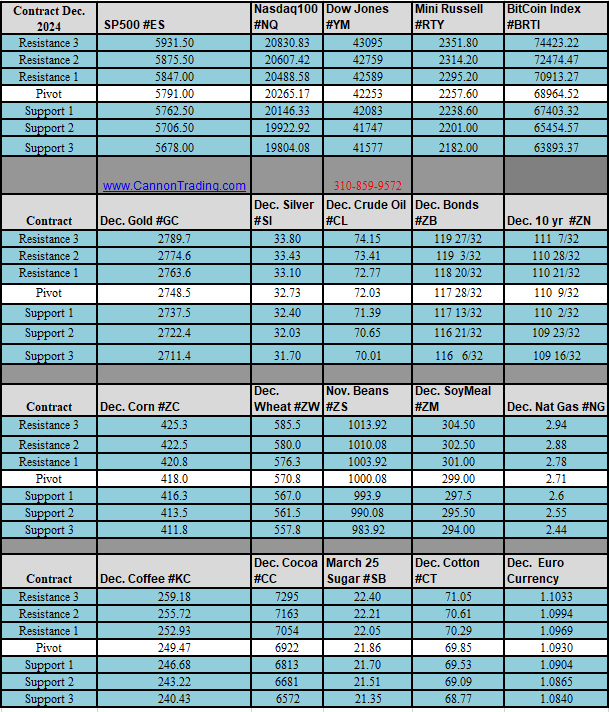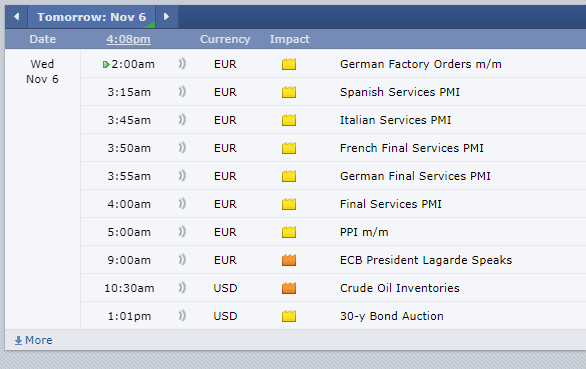US Elections, FOMC
By Mark O’Brien, Senior Broker
General:
On the heels of the U.S. Election Day results, commodities futures moves – up and down – have taken center stage in the financial world. Topping the charts – literally – the E-mini S&P 500 and E-mini Dow Jones vaulted to new all-time highs with 130+ and 1400+ point upward moves, respectively. Even the scrubby Russell 2000 took flight to new highs: up over 100 points, making it the stock index league leader in percentage gain at ±5.25%.
Outsize moves occurred across asset classes. Dec. gold gave up ±$80 per ounce (an $8,000 per contract move), silver lost over $1.60 per ounce (also an $8,000 per contract move) and copper shed over 20 cents per pound – a ±5% / $5,000 per contract move.
Marking the biggest one-day move in eight years – going back to the U.K. vote for Brexit in June 2016, the ICE U.S. Dollar Index jumped 1.8%, hammering other currency futures like the Euro, Japanese Yen, Swiss Franc and Mexican Peso, the latter sinking to its weakest level against the dollar this year.
In terms of percentage movement, the day’s titleholder will likely be Bitcoin futures with the December contracts – full-sized and micro contracts – increasing over 9% with a ±$7,000 move up to its own all-time high, touching 76,000 for the first time.
More General:
While the U.S. Election Day results have taken center stage, the futures markets are still keeping an eye on the rest of the upcoming potential market movers and that includes the conclusion of the most recent FOMC meeting tomorrow. The Fed is expected to reduce the benchmark policy rate by 25 basis points after it slashed its benchmark rate by 50 basis points, delivering its first rate cut since 2020 after their last meeting in September. The U.S. federal funds rate currently sits at 4.75%–5%. In September’s policy meeting, Fed policymakers anticipated the fed funds rate falling by additional 50 basis points by the end of this year, then another full percentage point through 2025, and a final half-point reduction in 2026, to end near the 2.75–3.00 per cent range.
|



